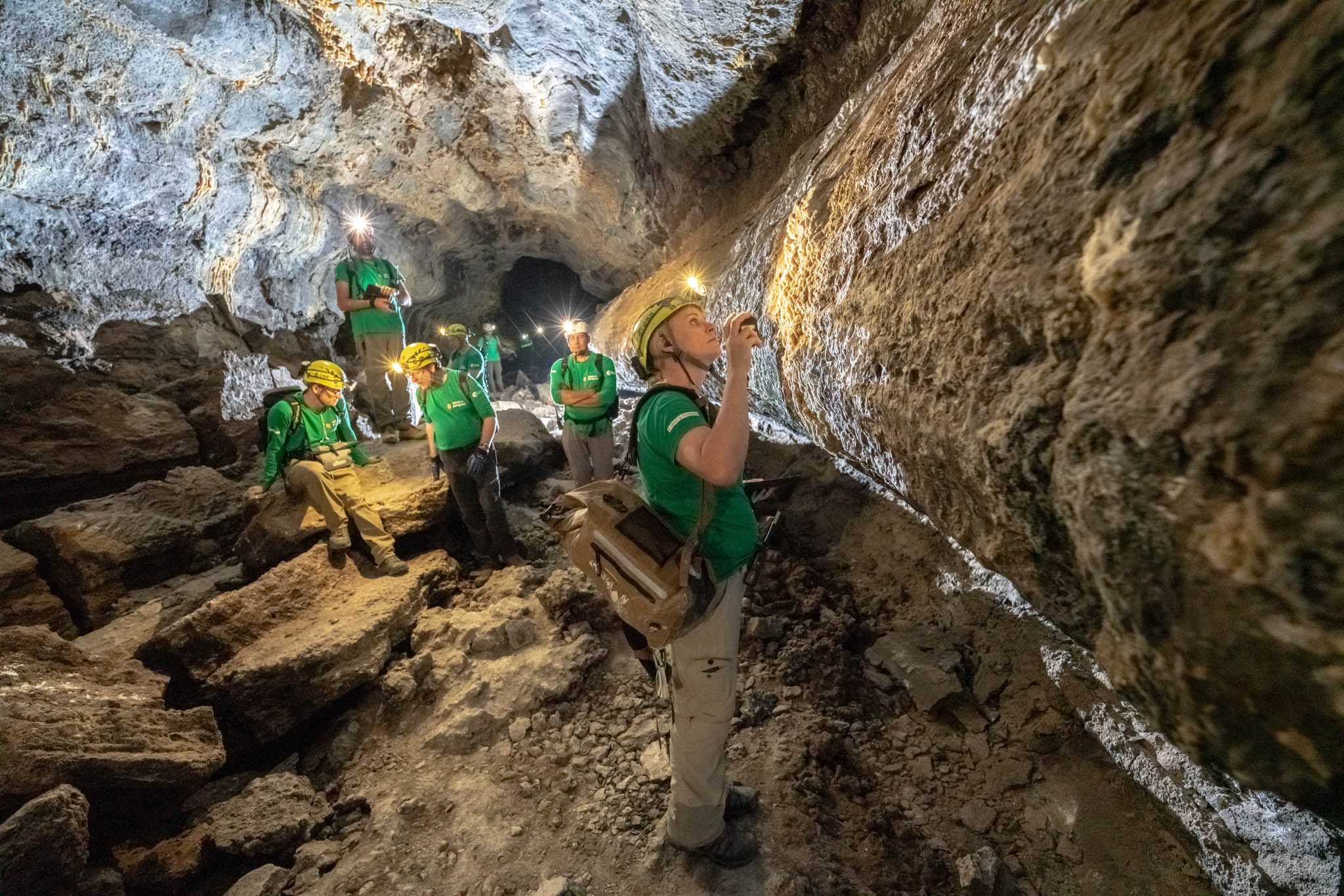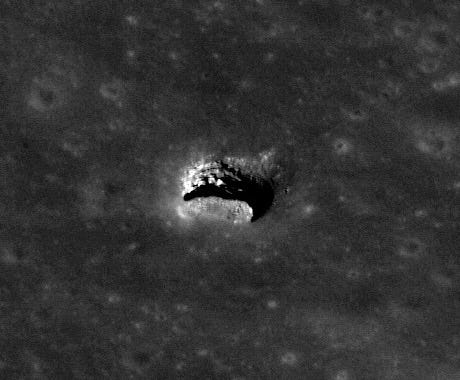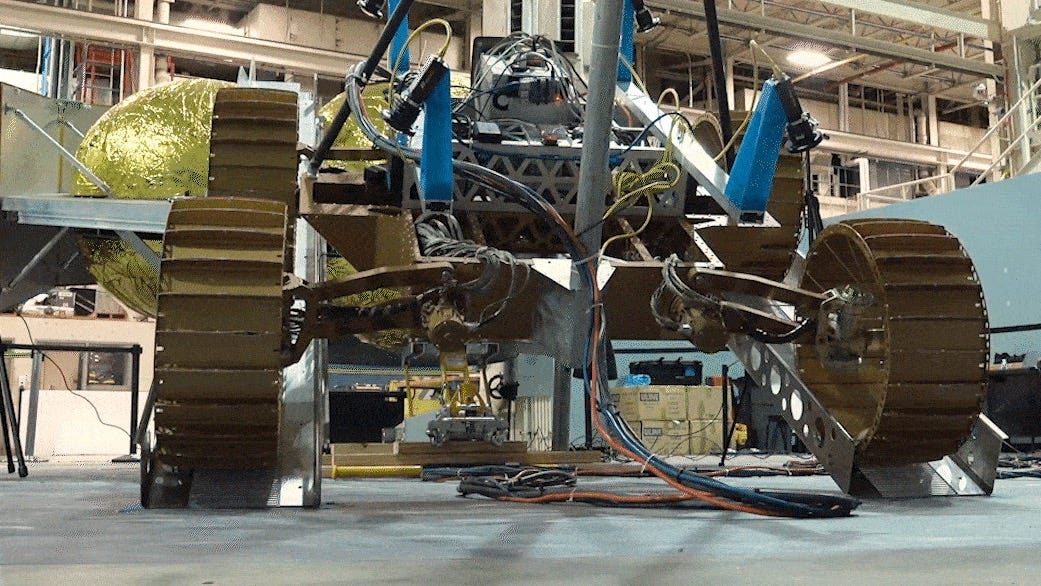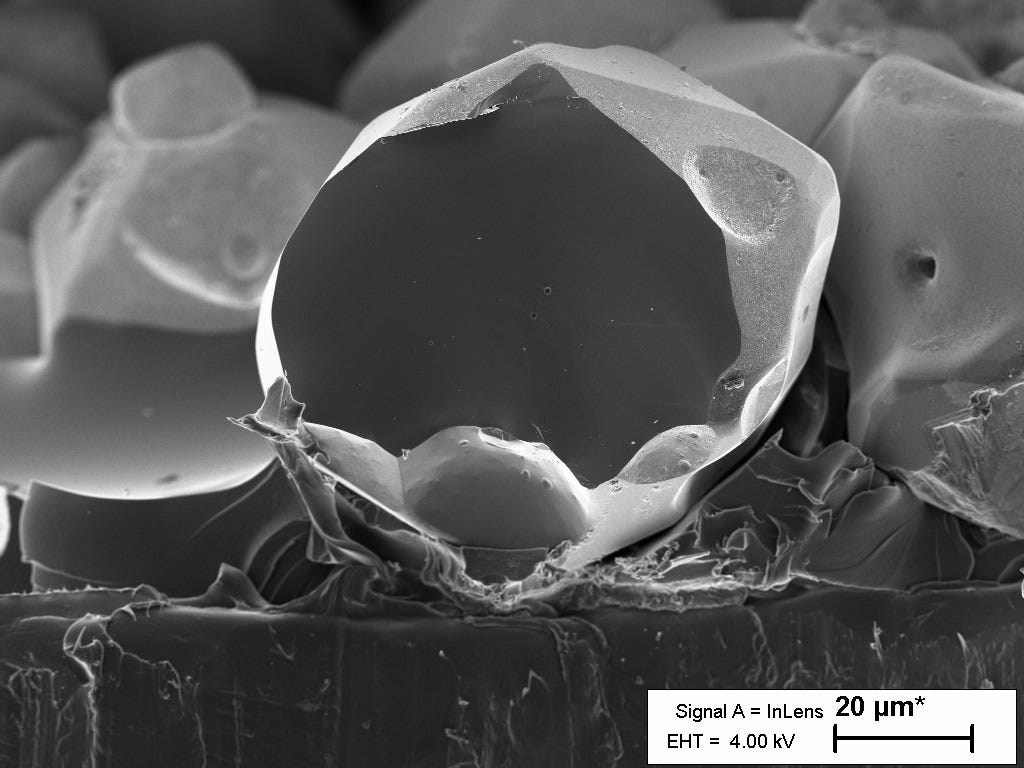Moon Monday Issue #56
ESA training future astronauts in a Moon-like lava tube; NASA SLS rocket to get booster upgrade next decade; a microcrystal for lunar solar power; how to process Chang'e data, and more lunar updates.
Highlight
ESA’s Pangaea campaign to train future lunar astronauts in geology, a highly valuable skill when exploring the Moon and collecting samples, continues strong at the Spanish Canary Islands northwest of Africa. After exploring lunar-esque volcanic landscapes in Canary’s Lanzorate region last month, the astronauts next visited its 8-kilometer long lava tube La Corona. It resembles the shape of lava tubes on the Moon and is formed similarly i.e. when volcanic lava flows cease, their surface can harden while the lava within drains to leave behind an underground tunnel. Openings to such lava tubes can form when lava flows breach the surface or if part of a surface collapses due to hot flows beneath.

Lunar lava tubes are protected from significant radiation and micrometeorite bombardment on the Moon’s surface, making them pristine places to study the Moon’s volcanic past and analyze rock samples untouched for well over a billion years. These traits combined with relatively stable temperatures also make them potentially good places to build sustainable habitats in. While the La Corona lava tube the Pangaea crew are exploring is one of Earth’s largest, it pales in comparison to those on the Moon where lower gravity and lack of intense erosion mechanisms can make for much longer and wider tunnels.

Exploration
NASA awarded a $3.19 billion contract to Northrop Grumman to produce six more pairs of boosters by end of 2031 for the agency’s SLS rockets launching on Artemis missions IV through IX. These twin boosters—based on the Space Shuttle Boosters with an added segment for increased thrust—are mounted on the side of SLS’ core stage and produce more than 75% of the thrust for each launch. With the Shuttle hardware inventory running out though, NASA has asked Northrop Grumman to make practically new and upgraded boosters to debut on Artemis IX on a SLS Block 2 evolved rocket configuration. Artemis IX is also when the Orion spacecraft on top of SLS will feature an upgraded main engine for the second time instead of its current also-Shuttle-era engine.

One way to look at these developments is to say, “These are the upgrades that should’ve been there from the very first Artemis mission” and I wouldn’t even disagree. But the other perspective to consider is that NASA is actually planning later-stage Artemis missions and is keen on keeping the momentum for return to the Moon alive, something important in its own right considering failed past efforts. Transitions to better systems can be made later—better than never—but a large-scale collaborative momentum across countries will be hard to kill, for good.
NASA completed a second test round of how its water-mapping VIPER rover will drive out of a ramp on Astrobotic’s Griffin lander post-landing on the Moon’s south pole in 2023. The test used a prototype rover with the latest hardware and software in development for VIPER as well as updated ramps on Griffin. The tests were successful even with the lander positioned at tilted angles, simulating a possible touchdown on a harsher area of the slope-riddled lunar polar terrain. NASA will begin constructing the VIPER flight rover in late 2022 at their Johnson Space Center, aiming to deliver it to Astrobotic in mid-2023 for integration with Griffin before launch later that year on a SpaceX Falcon Heavy rocket.

Science
Estonian university TalTech and ESA are co-developing microscopic iron pyrite crystals that could function as the light absorbing layer of a tiny solar cell to power future hardware on the Moon. The amount of power generated by one solar cell is minuscule but there would be billions of them on human-scale modules, and the crystals are adaptable to different shapes and sizes. The reason ESA is investing in iron pyrite crystals specifically is because iron and sulphur needed to produce them are abundant in the lunar soil.

This research is part of ESA’s Discovery & Preparation program, which supports such infrastructure-building developments using lunar soil, including a study which explored using lunar soil to store heat and provide electricity for astronauts, rovers and landers. ESA’s blog post on Off-Earth manufacturing provides a good overview of what the agency has been up to in this domain.
In order to help international planetary scientists, a new paper by several researchers from the Chinese Academy of Sciences explains how to access, process and understand data from China’s lunar and planetary missions. Specifically, it explains the sources, classification, content and its format, management, and release processes of the archived Chang’e data. I hope this leads to more collaboration and even more exciting lunar and planetary science results.
More Moon
Everyone, this one-of-a-kind Moon exploration newsletter is free, with no ads. And it will stay that way. If you like my global coverage of lunar exploration and science developments, support me to keep it going.
